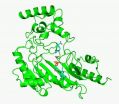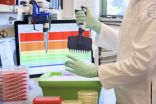(Press-News.org) University of California San Francisco scientists have identified characteristics of a family of daughter cells, called MPPs, which are the first to arise from stem cells within bone marrow that generate the entire blood system. The researchers said the discovery raises the possibility that, by manipulating the fates of MPPs or parent stem cells, medical researchers could one day help overcome imbalances and deficiencies that can arise in the blood system due to aging or in patients with specific types of leukemia.
Similar imbalances can render patients vulnerable immediately following bone-marrow transplants, especially following transplants of umbilical cord blood stem cells, said Emmanuelle Passegué, Ph.D., professor of medicine and member of the Eli and Edythe Broad Center of Regeneration Medicine and Stem Cell Research at UCSF, and the senior scientist for the study. Such patients often need red-blood-cell and platelet transfusions, as well as antibiotics to fight infections, until their grafted stem cells kick in and they produce an adequate balance of different types of blood cells.
Passegué's lab group determined that adaptation to the body's need to produce different mixes of blood cells at different times starts at the top of this hierarchy, with the hematopoietic stem cell (HSC). 'What we show is that the stem cell is making very educated decisions,' Passegué said. 'Previously, researchers thought that the developmental paths of daughter cells were randomly specified by the HSC, but we conclude that the HSC normally responds appropriately to signals in the environment, making the different MPPs in parallel, but at different speeds and in different amounts to meet the body's needs.'
Passegué's research team investigated in mice the patterns of gene expression and cell signaling that determine which developmental paths are favored when relatively rare HSCs spin off daughter cells, leading to the development of all of our red blood cells, white blood cells and platelets needed for blood clotting -- hundreds of billions of new cells each day.
In the new study, published online in Cell Stem Cell on June 18, Passegué also used mice to explore the responses of HSCs during transplantation. HCSs are the only cells known to be able to engraft in bone marrow and to regenerate the entire blood system. Among all blood cells, only HSCs are immortal. Each one can self-renew, spinning off new HSCs with each successive cycle of cell division. Alternatively, HSCs can instead divide into progenitor cells that cannot self-renew or engraft in bone, but which can give rise to generations of ever-more-specialized cells.
The UCSF team's experiments, many performed by postdoctoral fellows Eric Pietras, Ph.D., and Damien Reynaud, Ph.D., revealed that the first daughter cells that arise from HSCs already are distinct, favoring the development of different specialized cell lineages. The scientists identified two types of daughter cells, called MPP2 and MPP3, which under normal conditions are rare. They work together with more common daughter cells, called MPP4 cells, to control blood production.
MPP2 cells favor production of platelets and red blood cells, while MPP3 cells favor production of inflammatory cells. MPP4 cells are the main producers of lymphocytes that fight specific disease pathogens, but the study team showed that MPP4 cells can easily be re-educated to make many inflammatory cells when regenerative needs are high, as they are following transplantation. They found that during transplantation regenerating HSCs limit their own self-renewal, and instead go to work overproducing MPP2 and MPP3 cells that quickly produce needed red blood cells, platelets and inflammatory cells. Only later does MPP4 production return to normal, enabling the immune system to replenish lymphocytes.
In humans it's clear that imbalances often arise during aging, Passegué said, with production of disease-fighting immune cells lagging far behind youthful levels.
'It will be compelling to test whether the developmental pathways leading to cell specialization can be manipulated to favor production of specific lineage-biased MPPs in order to optimize blood recovery following hematopoietic injury, or to rebalance the output of various cell lineages in an aging or deregulated blood system,' she said.
INFORMATION:
The study was funded primarily by the National Institutes of Health, by the Leukemia and Lymphoma Society, and by the Wellcome Trust, through collaboration with investigators in Cambridge, UK.
About UCSF
UC San Francisco (UCSF) is a leading university dedicated to promoting health worldwide through advanced biomedical research, graduate-level education in the life sciences and health professions, and excellence in patient care. It includes top-ranked graduate schools of dentistry, medicine, nursing and pharmacy, a graduate division with nationally renowned programs in basic, biomedical, translational and population sciences, as well as a preeminent biomedical research enterprise and two top-ranked hospitals, UCSF Medical Center and UCSF Benioff Children's Hospital San Francisco. Please visit http://www.ucsf.edu.
PORTLAND, Ore. -- Advancing the field of structural biology that underpins how things work in a cell, researchers have identified how proteins change their shape when performing specific functions. The study's fresh insights, published online in the journal Structure, provide a more complete picture of how proteins move, laying a foundation of understanding that will help determine the molecular causes of human disease and the development of more potent drug treatments.
Though it has long been recognized that proteins are not static, for more than 30 years, scientists' ...
The secret to preventing HIV infection lies within the human immune system, but the more-than-25-year search has so far failed to yield a vaccine capable of training the body to neutralize the ever-changing virus. New research from The Rockefeller University, and collaborating institutions, suggests no single shot will ever do the trick. Instead, the scientists find, a sequence of immunizations might be the most promising route to an HIV vaccine.
Scientists have thought for some time that multiple immunizations, each tailored to specific stages of the immune response, ...
BOSTON, June 18 -- An analysis of five families has revealed a previously unknown genetic immunodeficiency, says an international team led by researchers from Boston Children's Hospital. The condition, linked to mutations in a gene called DOCK2, deactivates many features of the immune system and leaves affected children open to a unique pattern of aggressive, potentially fatal infections early in life.
As the researchers -- led by Kerry Dobbs and Luigi Notarangelo, M.D., of Boston Children's Division of Allergy and Immunology -- reported today in the New England Journal ...
Musicians don't just hear in tune, they also see in tune.
That is the conclusion of the latest scientific experiment designed to puzzle out how the brain creates an apparently seamless view of the external world based on the information it receives from the eyes.
"Our brain is remarkably efficient at putting us in touch with objects and events in our visual environment, indeed so good that the process seems automatic and effortless. In fact, the brain is continually operating like a clever detective, using clues to figure out what in the world we are looking at. And ...
A trio of studies being published today in the journals Science and Cell describes advances toward the development of an HIV vaccine. The three study teams all demonstrated techniques for stimulating animal cells to produce antibodies that either could stop HIV from infecting human cells in the laboratory or had the potential to evolve into such antibodies. Each of the research teams received funding from the National Institute of Allergy and Infectious Diseases (NIAID), part of the National Institutes of Health.
In one study, published in Science, researchers demonstrate ...
CHAPEL HILL, NC - Before there were cells on Earth, simple, tiny catalysts most likely evolved the ability to speed up and synchronize the chemical reactions necessary for life to rise from the primordial soup. But what those catalysts were, how they appeared at the same time, and how they evolved into the two modern superfamilies of enzymes that translate our genetic code have not been understood.
In the Journal of Biological Chemistry, scientists from the UNC School of Medicine provide the first direct experimental evidence for how primordial proteins developed the ...
Parkinson disease (PD) appeared associated with 16 types of cancer in a study in Taiwan, an effort to explain the association in an East Asian population because most prior research has been conducted in Western populations, according to an article published online by JAMA Oncology.
During the past 50 years, more than 25 epidemiological studies have been conducted on the association between PD and cancer, and most of those studies showed that individuals with PD had a decreased risk of cancer compared to those without PD. However, most of those studies were done in Western ...
A survey carried out earlier this year has found the first evidence of the 'superbug' bacteria Methicillin-Resistant Staphylococcus aureus (MRSA) in sausages and minced pork obtained from supermarkets in the UK. However, researchers stress that this does not pose a significant immediate risk to the public.
In February, a team of researchers funded primarily by the Medical Research Council (MRC) bought and analysed a total of 103 (52 pork and 51 chicken) pre-packaged fresh meat products, labelled as being of UK farm origin, from supermarkets in five different locations ...
PITTSBURGH, June 17 -- Regardless of chronological age, people who live in neighborhoods with high crime, noise and vandalism are biologically more than a decade older than those who do not, according to a study led by researchers from the University of Pittsburgh. The findings were published online today in PLOS One.
Strong research evidence supports that living in disadvantaged neighborhoods has an unfavorable impact on mental and physical health, explained lead author Mijung Park, Ph.D., M.P.H., R.N., assistant professor, University of Pittsburgh School of Nursing. ...
High in the sky where the cirrus ice crystal clouds form, jet contrails draw their crisscross patterns. Now researchers have found that these elevated ice cloud trails can influence temperatures on the ground and affect local climate, according to a team of Penn State geographers.
"Research done regarding September 2001, during the three days following 9-11 when no commercial jets were in the sky, suggested that contrails had an effect," said Andrew M. Carleton, professor of geography. "But that was only three days. We needed to look longer, while jets were in the air, ...




